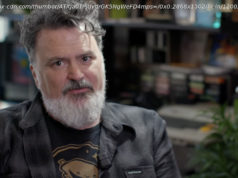 In 1956, during the General Motors Motorama exhibit, a short film aired suggesting that the world would have driverless cars by 1976. Inexplicably, everyone also sings. Those of us who are still waiting to get our hands on these hands off cars might scoff at the video, which teaches us all about the dangers of making unfounded predictions about the future.
In 1956, during the General Motors Motorama exhibit, a short film aired suggesting that the world would have driverless cars by 1976. Inexplicably, everyone also sings. Those of us who are still waiting to get our hands on these hands off cars might scoff at the video, which teaches us all about the dangers of making unfounded predictions about the future.
But, hey, let’s do it anyway! Here are the best technologies that maybe/possibly/hopefully will be arriving in 2017.
Robot chefs
If we ignore the part about robots dooming us all by forcing us into unemployment, the idea of a robot kitchen assistant is a dream come true. A year and a half ago, Moley Robotics said their robot hands would launch in 2017, claiming they would be able to cook 2000 meals at the push of a button. Whilst the undoubtedly expensive equipment won’t be one for all of us next year, the robot hands pave the way for a future where you might never have to stir your boyfriend’s beans again.
Google’s modular phone
Project Ara is Google’s attempt to stop us all buying a new iPhone every six months. The modular phone will allow users to slot in and out different parts of the device (such as cameras and speakers), meaning when phone technology improves you can simply swap in a new module rather than buy a whole new phone. The Ara phone has been delayed before, but Google hope it will be on the market in 2017.
Virtual touch
Electrovibration technology is seen as the way forward in allowing us to really “touch” the stuff on our touch screens. The tech will hopefully allow us to feel different textures, which could potentially help amputees and the blind, whilst also improving everything from gaming to online shopping.
Instant charging
The technology to improve batteries has been around for a while, with StoreDot unveiling their prototype fast-charging battery way back in 2014. Whilst battery life has been threatened by ever-slimming phones, there’s no reason that instantly-chargeable batteries shouldn’t be on the market soon. Get the hint, yeah, Apple?
The male “pill”
Research into male contraception is still ongoing 55 years after the pill was introduced in the UK (for the reason why, see: patriarchy). Nonetheless, there have been significant breakthroughs in the last few years, with RISUG and Vasalgel – both contraceptive injections – currently undergoing clinical trials.
The Moon Express
Whilst commercial trips to the moon may be another few years off, the first private company has permission to land on the moon in 2017. The Moon Express will launch its lunar landing next year, with permission from the US Government.
Fully waterproof iPhones
Though the iPhone 7 is partially waterproof (and for that we sacrificed our beloved headphone jack), fully waterproof iPhones are not yet widely available. With both the technology and the consumer demand available, 2017 will hopefully become the year that you can start keeping your phone in your back pocket again. (Bonus: Samsung also might release a phone you can fold .)
The e-shower
Speaking of water, the Hamwell’s e-shower could potentially help alleviate the world’s water crisis. The shower will recycle the water you’re using in real time, meaning you use a much smaller amount, and is commercially available next year. The water is caught in a tray, filtered with UV light, and then poured back over your head. Trust us, your great grandchildren will thank you.
Fake news detectors
With “fake news” being the hottest two words of the moment, it seems unlikely that the furore around the stuff won’t lead to practical solutions. Facebook are already said to be developing solutions, whilst various organisations are attempting to roll out real-time fact-checking. Could we live in a future where it’s impossible for politicians to lie? Well, no, but at least we’ll get better at telling when they’re doing it.
Last year, a spectacular event was recorded – something that scientists were calling “the brightest supernova ever”. Although the suspected supernova (the explosion of a star as it dies) actually occurred 2.8 billion years ago, the event in the southern constellation of Indus was documented in June 2015 by the All Sky Automated Survey for SuperNovae (ASAS-SN) network, a group of four automated 14cm telescopes that search for exploding stars.
The occurrence – named ASASSN-15lh – was over 500 billion times brighter than our Sun, and outshone the entire Milky Way 20 times over. Krzysztof Stanek, co-principal investigator of the ASASSN network, told the New Scientist “this is really on steroids, and then some”, adding that if such a supernova had occurred in our galaxy, there would be no night.
At first the event flummoxed astronomers, but after over a year of research, Queen’s University in Belfast (QUB) has just announced an alternative reason for the bright light – that it marked the death throes of a star being ripped apart by a supermassive black hole.
As star deaths go, this is less exciting than the Starkiller Base’s super-weapon from The Force Awakens needing to drain a star’s energy to function, but much more unusual than most supernovae. However, the argument is far from resolved; there is evidence to support or disclaim both explanations.
There were several characteristics of the event that suggest that it was not a superluminous supernova – which would have been ten-100 times more luminous than an “average” supernova – but initially astronomers did not know how else to classify such a bright star death. Other astronomical occurrences had exhibited similarly atypical parts of their spectra, some of which had also been labelled superluminous supernovae. They have also been attributed to other alarming and unusual space features, for instance magnetars (extraordinarily dense neutron stars, with magnetic fields about 1,000 trillion times more powerful than Earth’s magnetic field).
Some of ASASSN-15lh’s characteristics seemed to confirm the original superluminous supernova narrative, such as magnesium lines in its spectrum, which researchers from the ASASSN network had predicted would be there, based on observations of previous superluminous supernovae. Then, after 100 days, there was another anomaly – ASASSN-15lh’s light, which had been weakening, stubbornly re-brightened. Although there is no consensus on an explanation for this phenomenon yet, other so-called superluminous supernovae had sometimes done this, so it did not directly contradict the dominant narrative.
Still, some astrophysicists, including a group from the Experimental Astrophysics group at the Weizmann Institute of Science, Israel, wrote a paper arguing against the supernova label for ASASSN-15lh. Giorgos Leloudas, lead author of this study, told Space.com that this aspect of the star death was inconsistent with fundamental aspects of a supernova, like the temperature evolution – as it is “an expanding ball of gas”, by nature it must cool down as it swells. Rather, he observed, the object “started warming up again, and stayed hot at a constant and very high temperature for a long time, and it continues to do so”.






